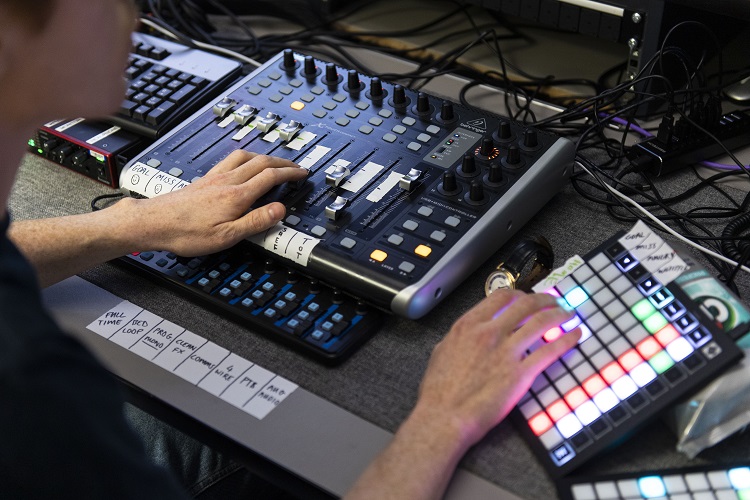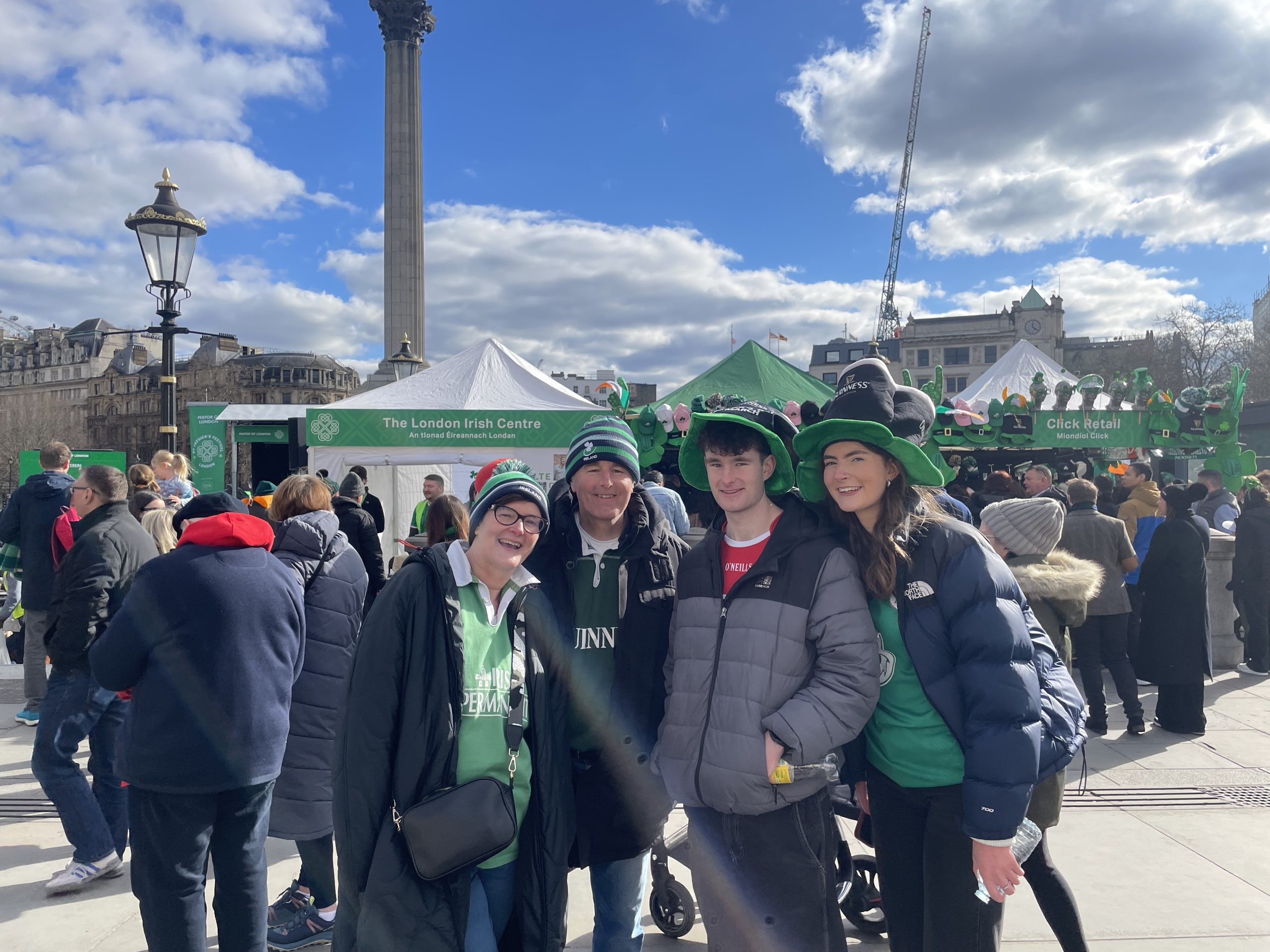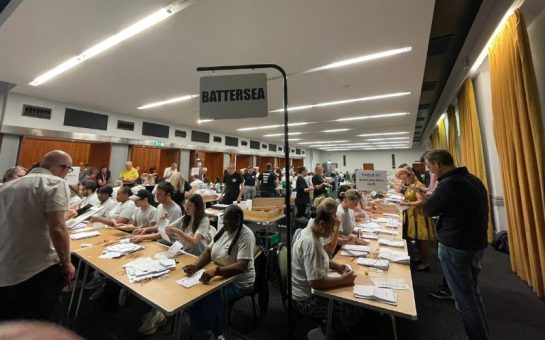By Daniel Gayne
September 1 2020, 15.00
Follow @SW_Londoner
Adam Peri was in Manchester preparing for the big match when the news came: The Arsenal v City game was to be postponed due to coronavirus fears.
Days later the Government announced sweeping measures to tackle the virus and Adam, along with the rest of the country, went into lockdown.
Only a month into a full-time role as a Sky Sports sound supervisor, this was a disappointing kick off for Adam, 33.
When, a few weeks into the lockdown, he was handed a vague, experimental project, he was simply glad to have something to do.
With an eye towards a potential season restart, Sky bosses had asked him to explore the possibility of synthesising a match-day crowd. Experimenting alone at home on a 7-octave keyboard, the project seemed at first like little more than a distraction.
“I didn’t really see how it was going to work”, says Adam. “You could tell with the gear I was given that no-one had given it much thought.”
He quickly ditched the ivories and got himself some more sophisticated kit, as well as a green-light to take the project to the next level. First, though, he needed a team.
“I instantly thought of Harry and Louis,” he says.
Harry Brown, 26, and Louis Ottmann, 24, were both sound operators at Sky, Louis having joined full-time only two weeks before lockdown. More importantly, they both produced music and Harry was a DJ too, just the skill set Adam was looking for.
Just like that, Sky’s Augmented Audio Team was born, and a brave new era of live-mixed crowd sound ushered in.
All three praise the trust given to them by Sky to develop a product for an audience of millions.
“We’re three soundies and management left it to us to develop this project”, says Harry.

The team quickly found an effective approach. With a programme called Ableton Live, typically used by musicians, they loaded up a portfolio of samples provided by FIFA creators EA Sports.
These boos, cheers, whistles, and chants could then be triggered by a Novation Launchpad and played over a constant ‘bed’, a looped track of layered crowd sounds, controlled by motorised faders.
The team would eventually grow to 8 members; enough to cover the final day of the Premier League. They were each given 4 days of training, practicing on a single game: an Under 21’s match between Arsenal and Aston Villa, chosen precisely because it had been played without a crowd.
After a few repetitions, it was clear that the engineers were memorising the game’s ebbs and flows, so they moved to Youtube, practising on clips with the sound muted.
The expectation was that this would be an optional product, available for discerning viewers on the Red Button. It was just two days before the restart when Sky execs made the call – augmented audio would be launching on Sky Sports Main Event.
“It was definitely straight in at the deep end,” says Louis, and when the product went live the reception wasn’t all good.
“At the beginning we were definitely marmite,” Harry says.
Dean Henderson makes a save and Sky Sports blast out a crowd cheering effect as if they’ve just scored an injury time winner in a UCL final. Think the technical team have work to do
— Sam™️ (@thfcsamuel_) June 17, 2020
Football fans are an opinionated bunch, and Sky’s sound engineers were now under scrutiny usually reserved for on-pitch performance, with every mistake triggering a proliferation of derisory memes.
Beyond the taunts, Harry says that some of the criticisms actually helped them to improve a product which was really still in its infancy.
There were complaints from other quarters too. Initially, operators were encouraged by producers to be realistic in their use of boos and whistles. In a game shortly after the restart, they had one club’s fans boo their own team after a home defeat.
The team complained, and engineers now reserve boos and whistles for severe fouls.
As the product got better and the sound operators tightened their game, the critics mostly disappeared.
According to Louis, this is not unusual in the world of audio. “You know that you’re doing a good job when no-one is saying anything,” he says.
Still, the operators can’t afford to get careless. “There’s no delay and it’s not recorded, it’s literally all live, so if you do hit miss just before a goal you‘re gonna hear a miss,” says Louis.
“It’s almost like a musical performance – you’re hitting samples, you’re riding faders, you’re watching the visual and trying to dance around everything.”
Harry has a different analogy: Bop-It.
“Your reactions have to be so fast”, he says, giving the seemingly simple example of a foul: How bad was it? Was it caused by the home or away team? Such factors have to be considered in milliseconds as engineers reactively hit samples and adjust levels.
But no matter how focused and experienced engineers get, sometimes a goal just comes out of nowhere.
Louis remembers being late to the trigger during a Tottenham game, shortly after the restart: “Someone sent an absolute screamer from not even far off the half-way line, just top bins, and I didn’t see it coming at all.”
The team are now preparing for the new season, as well as other Covid-era sporting projects, but they are under no impression that they could ever provide what a real crowd does for the game.
“We’re only trying to provide some kind of sanity to what’s going on at the moment,” says Harry. “Nothing beats a real crowd.”




